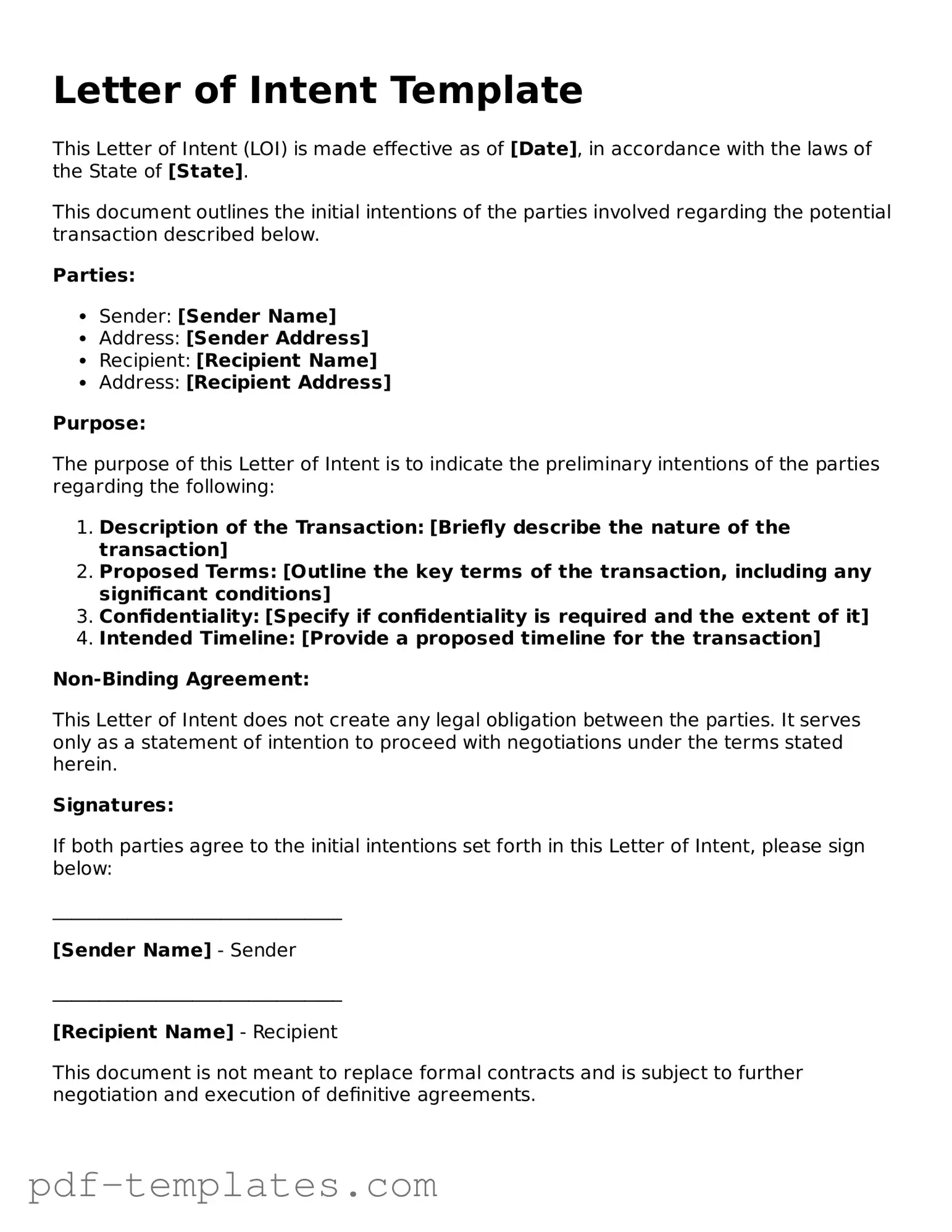The Letter of Intent (LOI) shares similarities with a Memorandum of Understanding (MOU). Both documents outline the intentions of the parties involved in a potential agreement. An MOU typically provides a broader framework for cooperation, detailing the roles and responsibilities of each party. While an LOI may focus on specific terms related to a transaction, an MOU can encompass various aspects of a partnership or collaboration, making it more comprehensive in nature.
A Term Sheet is another document akin to a Letter of Intent. It serves as a summary of the key terms and conditions that parties agree upon before finalizing a contract. While an LOI often expresses intent and may not be legally binding, a Term Sheet can outline specific financial terms and conditions, such as pricing, timelines, and obligations. This clarity helps streamline negotiations, making it easier for both parties to reach a formal agreement.
An Offer Letter is similar to an LOI in that it communicates the intent to enter into a contractual relationship. Typically used in employment scenarios, an Offer Letter outlines the terms of employment, including salary, benefits, and job responsibilities. Unlike an LOI, which may pertain to various types of agreements, an Offer Letter is specifically tailored to employment situations, providing clarity to the prospective employee about what to expect.
A Non-Binding Agreement also resembles a Letter of Intent. Both documents express the intentions of the parties involved without creating a legally enforceable obligation. A Non-Binding Agreement may outline the framework for discussions or negotiations, similar to an LOI. However, it often emphasizes that the terms discussed are subject to further negotiation and formalization, allowing parties to explore options without commitment.
An Engagement Letter is another document that shares characteristics with a Letter of Intent. Commonly used in professional services, it outlines the scope of work, fees, and responsibilities of both the service provider and the client. While an LOI may indicate a general intent to collaborate, an Engagement Letter provides more specific details regarding the services to be rendered, establishing a clearer understanding between the parties.
A Confidentiality Agreement, or Non-Disclosure Agreement (NDA), can also be compared to a Letter of Intent. Both documents may be used in preliminary discussions before a formal contract is signed. An NDA ensures that sensitive information shared during negotiations remains confidential, while an LOI outlines the intent to engage in discussions or negotiations, often including provisions related to confidentiality as well.
A Purchase Agreement is similar to a Letter of Intent in that both documents can initiate a transaction. A Purchase Agreement is a legally binding contract that outlines the terms of a sale, including price, payment terms, and delivery conditions. An LOI, on the other hand, typically expresses the intent to enter into such an agreement and may include preliminary terms that will later be detailed in the Purchase Agreement.
A Partnership Agreement shares similarities with a Letter of Intent, particularly when establishing a new business relationship. A Partnership Agreement outlines the terms of the partnership, including profit-sharing, responsibilities, and decision-making processes. An LOI may serve as a precursor to this agreement, indicating the parties’ intent to form a partnership and laying the groundwork for further discussions.
A Joint Venture Agreement is another document that can be compared to a Letter of Intent. Both documents signify a collaboration between two or more parties. A Joint Venture Agreement details the specific terms and conditions of the joint effort, including contributions and profit-sharing. An LOI may express the intent to form such a venture and outline the preliminary terms that will be formalized in the Joint Venture Agreement.
In the realm of homeschooling, it's vital for parents to understand the importance of documentation similar to that of formal agreements in various other contexts. Just like a Letter of Intent, the process of notifying a local school district about one's intention to homeschool can often be formalized through necessary paperwork. For this purpose, families must be aware of the Homeschool Letter of Intent form, which plays a crucial role in laying the foundation for their children's education outside of conventional schooling.
Finally, a Franchise Disclosure Document (FDD) can be likened to a Letter of Intent in the context of franchising. While an FDD provides detailed information about the franchise opportunity, including fees, obligations, and risks, a Letter of Intent may express the prospective franchisee's interest in pursuing the franchise. The LOI can serve as a first step in the process, indicating a desire to move forward with the opportunity while the FDD provides essential details for informed decision-making.
